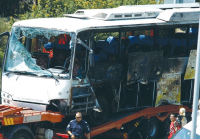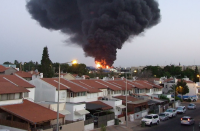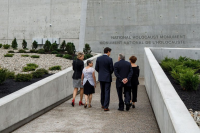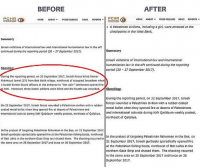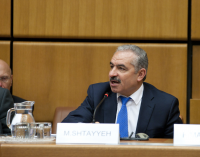
Links
Sheba Medical Centre
Melanie Phillips
Shariah Finance Watch
Australian Islamist Monitor - MultiFaith
West Australian Friends of Israel
Why Israel is at war
Lozowick Blog
NeoZionoid The NeoZionoiZeoN blog
Blank pages of the age
Silent Runnings
Jewish Issues watchdog
Discover more about Israel advocacy
Zionists the creation of Israel
Dissecting the Left
Paula says
Perspectives on Israel - Zionists
Zionism & Israel Information Center
Zionism educational seminars
Christian dhimmitude
Forum on Mideast
Israel Blog - documents terror war against Israelis
Zionism on the web
RECOMMENDED: newsback News discussion community
RSS Feed software from CarP
International law, Arab-Israeli conflict
Think-Israel
The Big Lies
Shmloozing with terrorists
IDF ON YOUTUBE
Israel's contributions to the world
MEMRI
Mark Durie Blog
The latest good news from Israel...new inventions, cures, advances.
support defenders of Israel
The Gaza War 2014
The 2014 Gaza Conflict Factual and Legal Aspects
To get maximum benefit from the ICJS website Register now. Select the topics which interest you.
Signs increasingly point to sabotage in fiery explosion at Iranian nuclear complex
 The new centrifuge assembly workshop at the Natanz uranium enrichment complex in Iran, according to an analysis by the Middlebury Institute of International Studies in Monterey, Calif. (Planet Labs/MIIS/Reuters)
The new centrifuge assembly workshop at the Natanz uranium enrichment complex in Iran, according to an analysis by the Middlebury Institute of International Studies in Monterey, Calif. (Planet Labs/MIIS/Reuters)
A massive explosion and fire at a highly sensitive Iranian nuclear facility last week was probably an act of sabotage, intelligence officials and weapons experts said Monday, but analysts were divided over the severity of the damage to Iran’s nuclear program.
Satellite photos released over the weekend show a gaping hole in a large industrial building where Iranian technicians assembled machines that make enriched uranium. The building, on the grounds of Iran’s sprawling Natanz uranium-enrichment complex, was rocked early Thursday by a mysterious blast that Iranian officials acknowledge caused “significant” damage.
A spokesman for Iran’s nuclear energy agency on Monday said the country’s security agencies knew the cause of the explosion but would provide no details for now, citing “security considerations.” Other Iranian officials have publicly suggested that the United States or Israeli operatives were to blame, although neither country has acknowledged any involvement in the incident.
A Middle Eastern security official said in an interview that the damage was caused by a “huge explosive device” planted by Israeli operatives to “send a signal” to Tehran. The official spoke on the condition of anonymity, citing the sensitive nature of the intelligence and insisting that his name and nationality not be revealed.
“There was an opportunity, and someone in Israel calculated the risk and took the opportunity,” the official said. He described the building as having been “completely destroyed.”
Israel linked to crippling cyber attack on Iranian port facility
Other analysts and nuclear experts also said the evidence so far strongly suggests that a bomb detonated in the facility, known as the Iran Centrifuge Assembly Center. In addition to satellite images, photos released by Iran’s Atomic Energy Organization show doors blown off hinges, cracked walls and missing roof panels.
“The simplest explanation is an explosion inside the building,” said Jeffrey Lewis, a professor and weapons expert at the Middlebury Institute of International Studies in Monterey, Calif. “It’s getting really hard to see this as an accident.”
The building began operating in 2018 as Iran’s main center for assembling new centrifuge machines for the large uranium-
enrichment plant at the same complex south of Tehran. Iran was permitted to operate the facility under the terms of the 2015 Iran nuclear agreement, and the site had been visited by inspectors of the International Atomic Energy Agency, the U.N. nuclear watchdog. Iran’s Natanz facility produces low-enriched uranium of the type used in commercial nuclear power plants to make electricity. With additional processing, the uranium could potentially be converted into weapons-grade fuel for nuclear bombs.
Iran began sharply increasing its production of low-enriched uranium last year in a protest over the Trump administration’s 2018 decision to unilaterally withdraw from the Iran nuclear deal. The move has dramatically shortened Iran’s theoretical timeline for making a nuclear weapon, although IAEA officials have seen no evidence so far that Tehran is seeking to build a bomb.
The Middle Eastern security official said the explosion was a “wake-up call” intended to deter Iran after months of ominous advances in that country’s nuclear program. The operatives who carried out the apparent attack clearly had remarkable penetration of Iran’s nuclear program and detailed knowledge of the facility, he said. “Doing such a thing takes some serious preparation and time,” he said.
Regardless of whether sabotage was involved, the explosion was a setback to Iran’s nuclear efforts. Still, analysts disagreed over the extent of damage.
Undoubtedly, it will take Iran many months to rebuild the facility, which means long delays in installing the advanced, high-
capacity centrifuges that Iran has been constructing in recent years, said David Albright, a nuclear weapons expert and president of the Institute for Science and International Security, a Washington nonprofit organization that researches nuclear weapons programs. “The assembly plant can be a bottleneck,” Albright said. “It will certainly delay them.”
But other analysts said the explosion will have little immediate effect on Iran’s two existing uranium-enrichment facilities. Ultimately, the attack may encourage Iran to carry out nuclear related activities in secret rather than in publicly declared facilities subject to international inspection, several experts said.
Watchdog sees sharp rise in Iran’s uranium stockpile
“As the Iran deal continues to crumble under external pressure, it’s going to make it a lot easier for those who want out of the nuclear deal to push to build more secret facilities — and eventually a bomb,” Lewis said. “You can set them back a few months, but is it really worth it if you don’t have a plan for solving the nuclear problem during those few months?”
In Israel, military and intelligence agencies were characteristically silent on the attack and any role the country may have played. Several former security officials, while not claiming inside knowledge, sifted through published images and media reports and found reason to be impressed with the sophistication and effectiveness of the strike.
Former Israeli deputy national security adviser Chuck Freilich noted that a cyberattack, if that was part of the operation, came after Iran had hardened its defenses following previous network assaults. Those included recent purported tit-for-tat hacks by Iran and Israel on each other’s public infrastructure and the Stuxnet virus that severely damaged Iran’s nuclear program a decade ago.
“Ever since then, they’ve been on super-duper extra alert,” Freilich said. “If this was a cyberattack and somebody got through, it demonstrates really top abilities.”
Retired Maj. Gen. Yaakov Amidror, former head of intelligence research for the Israel Defense Forces, applauded the attack as a necessary check on Iran’s ongoing progress toward nuclear and strategic weapons capability. A critic of the Iran nuclear deal, Amidror said the agreement left Tehran free to strengthen its expertise in two particularly threatening areas: refining centrifuges and improving long-range missile technologies. The recent attacks struck at both programs, he noted.
Hendrix reported from Jerusalem. Louisa Loveluck in London contributed to this report
# reads: 1236



